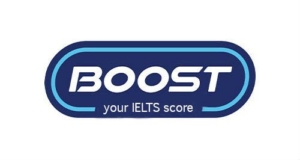Cohesive devices are words and phrases that link sentences and paragraphs together smoothly, making the text easier to read and understand. They play a crucial role in enhancing the readability of the text by ensuring that ideas are presented in a connected and logical manner. This article explores the various types of cohesive devices, their importance, and how they can be effectively used to improve writing.
Types of Cohesive Devices – cohesive devices là gì
Reference
Reference involves the use of pronouns and demonstratives to refer back to something previously mentioned in the text. This helps avoid repetition and keeps the text concise.
- Pronouns: Words like he, she, it, and they can be used to refer to nouns mentioned earlier. For example, “John went to the store. He bought some milk.” In this sentence, “he” refers to John.
- Demonstratives: Words like this, that, these, and those are used to point to specific items. For example, “I enjoyed the movie. That was the best film I’ve seen in years.” Here, “that” refers to the movie.
Substitution
Substitution involves replacing a word or phrase with another word to avoid repetition. This keeps the writing fresh and avoids monotony.
- Substitution Words: Words like one, ones, and do can be used to replace nouns and verbs. For example, “I need a pen. Do you have one?” Here, “one” substitutes for “pen.”
Ellipsis
Ellipsis involves omitting parts of a sentence that are understood from the context. This helps to keep the writing concise and avoids redundancy.
- Ellipsis in Action: For example, “I’ll order pizza if you will.” The full sentence would be “I’ll order pizza if you will order pizza,” but the second “order pizza” is omitted because it is understood.
Conjunctions
Conjunctions are words that connect clauses, sentences, or words. They are divided into coordinating and subordinating conjunctions.
- Coordinating Conjunctions: These include words like and, but, or, nor, for, so, and yet. They connect words, phrases, or clauses of equal importance. For example, “She was tired, but she finished her homework.”
- Subordinating Conjunctions: These include words like because, although, while, and since. They connect a dependent clause to an independent clause. For example, “She finished her homework because she was determined.”
Lexical Cohesion
Lexical cohesion involves the use of vocabulary to create connections within the text. This includes repetition, synonyms, and collocations.
- Repetition: Repeating the same word or phrase to emphasize a point. For example, “The weather was hot. It was a sweltering day.”
- Synonyms: Using words with similar meanings to create variety while maintaining the connection. For example, “The weather was hot. It was a scorching day.”
- Collocations: Words that frequently go together, enhancing the natural flow of the text. For example, “make a decision,” “take a break.”
How Cohesive Devices Enhance Writing
Improving Flow
Cohesive devices connect sentences and paragraphs, ensuring a smooth transition from one idea to the next. This improves the overall flow of the text, making it easier for readers to follow the argument or narrative.
Clarity and Understanding
By linking related ideas and clarifying relationships between them, cohesive devices help readers understand the text better. They provide a roadmap for navigating through the content, highlighting the connections between different points.
Emphasis and Focus
Cohesive devices can also be used to highlight important points and emphasize the main ideas. This helps to focus the reader’s attention on the most critical parts of the text, ensuring that the key messages are effectively communicated.

cohesive devices
Examples of Effective Use
Academic Writing
In academic writing, cohesive devices are essential for presenting complex arguments and supporting evidence in a logical and coherent manner. For example, in a research paper discussing climate change, one might use cohesive devices to link the causes, effects, and possible solutions seamlessly.
- Example: “The increase in greenhouse gases is a major cause of global warming. This rise in temperatures has led to melting ice caps and rising sea levels. Therefore, it is crucial to reduce carbon emissions to mitigate these effects.”
Creative Writing
In creative writing, cohesive devices help to create a coherent narrative and maintain the reader’s engagement. For example, in a novel, a writer might use cohesive devices to link different scenes and character developments.
- Example: “Jane walked through the old house, memories flooding back with each step. She remembered the laughter that once filled these halls. Now, the silence was deafening, a stark contrast to the vibrant past.”
Professional Writing
In professional writing, such as business reports or emails, cohesive devices ensure that the information is presented clearly and logically. This helps the reader to understand the content and follow the writer’s argument or recommendations.
- Example: “Our sales have increased by 20% this quarter, which is a significant improvement from the previous quarter. Consequently, we can expect a higher profit margin. Furthermore, we plan to reinvest this profit into new product development.”
Common Mistakes to Avoid
Overuse
While cohesive devices are important, overusing them can make the text seem forced and unnatural. It is essential to use them judiciously to maintain a natural flow.
- Example of Overuse: “Moreover, the project was successful. Additionally, the team worked hard. Furthermore, the results were impressive.”
- Improved Version: “The project was successful due to the team’s hard work. The results were impressive.”
Inappropriate Use
Using cohesive devices inappropriately can confuse the reader and disrupt the flow of the text. It is important to use them correctly to ensure clarity and coherence.
- Example of Inappropriate Use: “He was late for the meeting. Therefore, he was not feeling well.”
- Improved Version: “He was late for the meeting because he was not feeling well.”
Lack of Variety
Using the same cohesive devices repeatedly can make the text monotonous. Varying the types of cohesive devices used can make the writing more engaging and dynamic.
- Example of Lack of Variety: “She studied hard. She wanted to pass the exam. She knew it was important.”
- Improved Version: “She studied hard because she wanted to pass the exam, knowing it was important.”
References:
- Biber, D., Johansson, S., Leech, G., Conrad, S., & Finegan, E. (1999). Longman Grammar of Spoken and Written English. Longman.
- Hyland, K. (2005). Metadiscourse: Exploring Interaction in Writing. Continuum.
- Swales, J.M., & Feak, C.B. (2012). Academic Writing for Graduate Students: Essential Tasks and Skills. University of Michigan Press.
- Carter, R., & McCarthy, M. (2006). Cambridge Grammar of English: A Comprehensive Guide. Cambridge University Press.


